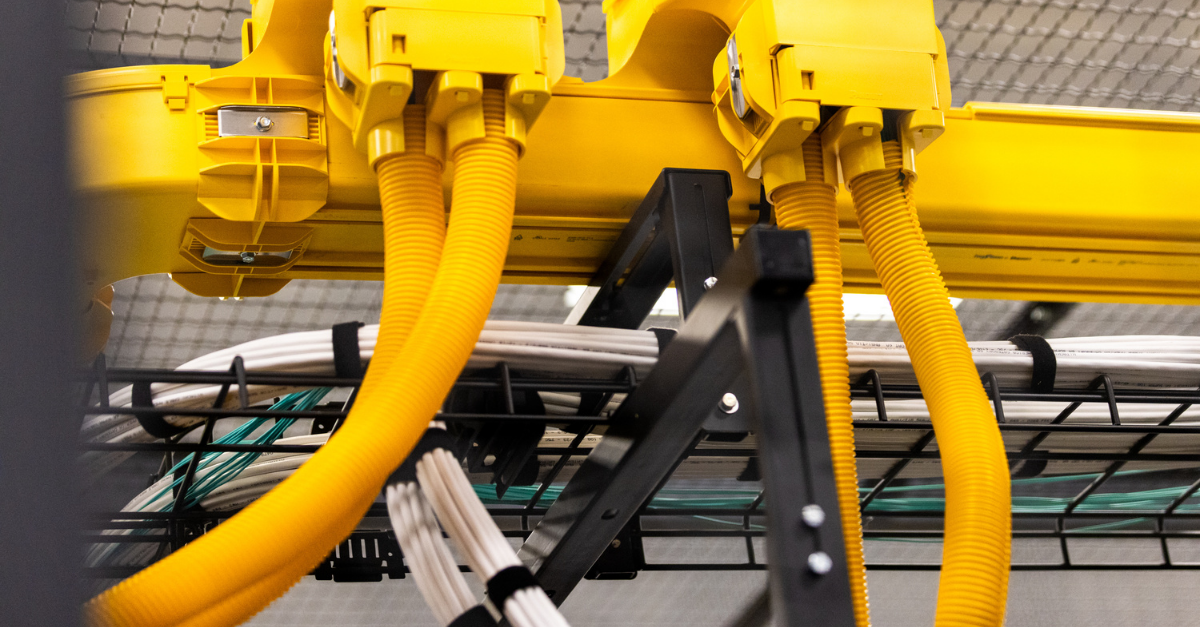The evolution of connectivity
Explore the evolution of data center connectivity—from cross connects to virtual connectivity and discover how Flexential Fabric transforms interconnection.

The evolution of data center connectivity can be traced back to the turn of the century during the internet's infancy. Specifically, interconnection was the key concept of how the Internet scaled into a network of networks. Interconnection is simply the private exchange of traffic between two parties and is a crucial part of how the Internet operates in the modern day. This type of connectivity takes place in data centers around the world, interconnecting network infrastructure, which allowed the internet to evolve to what it is today without silos and splintered factions. The evolution of interconnection has transformed how we do business and access information daily.
Interconnection emerged from the challenge to scale the internet. During this time, there were segmented networks across different regions that could not communicate with each other, creating isolation. The solution was to connect these different networks at physical meeting places, which gave rise to carrier-neutral data centers. This led to the birth of critical neutral exchange points for traffic to be shared and, ultimately, the underlying infrastructure of an interconnected internet. More traffic began to be exchanged, facilitating the need for more network access points to reduce congestion. These neutral access points and different networks led to decentralization and allowed for the continual scale of the Internet. Inside and in between these exchange points, now known as data centers, copper and fiber optic cables were used to physically connect these networks. This concept of physically connecting two parties inside a data center is now known as a cross connect. Ecosystems beyond just networks began to emerge in the data center industry. This first included content providers who wanted to reach end users on different networks, thus leading to ecosystems scaling to financials, clouds, and enterprises all wanting to exchange traffic. Physical or layer one interconnection and critical exchange points in data centers paved the way for all the physical pieces that make up the modern internet.
“It's all about the connectivity, and it's all about redundancy, security, resiliency, and I think that's ultimately what our IT consumers want—the ability to make performance a competitive advantage.”
—Jason Carolan, CIO, Flexential, Data centers in the AI era: Emerging trends and strategies for 2024
While cross connects play a pivotal role in connecting networks and ecosystems with a one-to-one relationship, a new iteration of interconnection stemmed from this concept, known as virtual connectivity. This software-defined construct operates at layer two of the open systems interconnection (OSI) model and enables multiple virtual connections (VCs) to be made between two parties from a single physical interface. Virtualizing connectivity in this manner allows customers to reach beyond the four walls of a data center to connect to parties located in different markets and regions by riding a private network backbone. It also provides the ability to dynamically scale the size of the connection, known as bandwidth. With the flexibility to size bandwidth as needed and the reach to connect to ecosystems in geo-diverse areas, virtual connectivity unlocks new networking methodologies and transforms how business is conducted in the digital world.
Determining whether to use a layer one physical connection, such as a cross connect or a layer two virtual connection, will depend on a customer’s exact use case and the amount of traffic being transported. At Flexential, we can provide solutions for both connectivity types and access to a diverse ecosystem of network and cloud providers. The Flexential interconnection evolution from cross connects to a software-defined fabric known as Flexential Fabric provides customers a new approach to facilitate connections through a self-service web portal. Whether IP transit is needed over the internet or private transport is needed between diverse data center locations, Flexential Fabric can transform the way interconnection is deployed and serviced.
Flexential has encompassed the evolution of connectivity to make our interconnection portfolio easy to consume, agile to deploy, and dynamic to scale through Flexential Fabric. Businesses can access their ecosystem partners in a more agile and effective fashion, ultimately transforming customer experience and accelerating their own digital evolution. We have come a long way from the early days of the internet, and Flexential will play a critical role in the time to come for the interconnection of digital infrastructure.
Read more about how Flexential Fabric is redefining connectivity and bringing a strategic, integrated approach to technology infrastructure.






